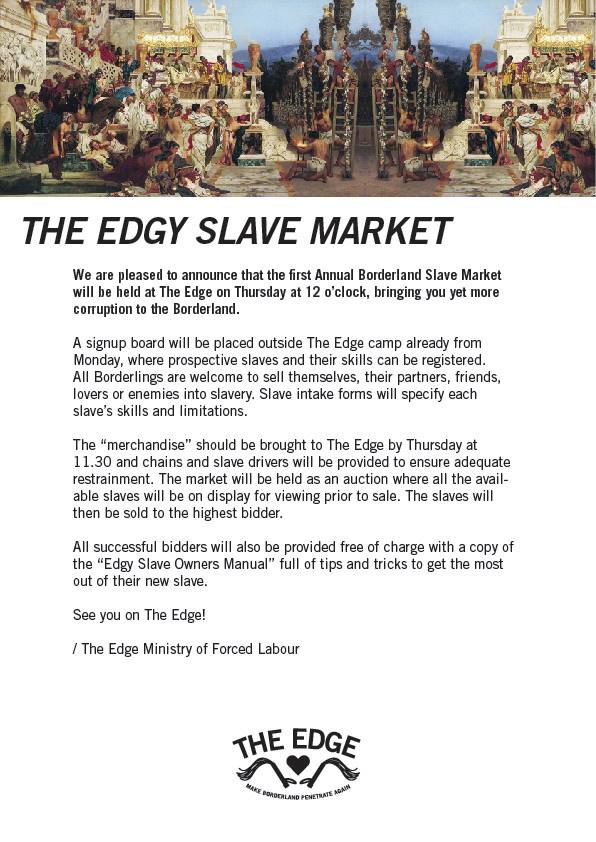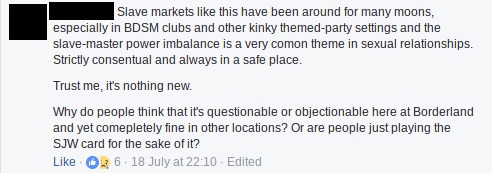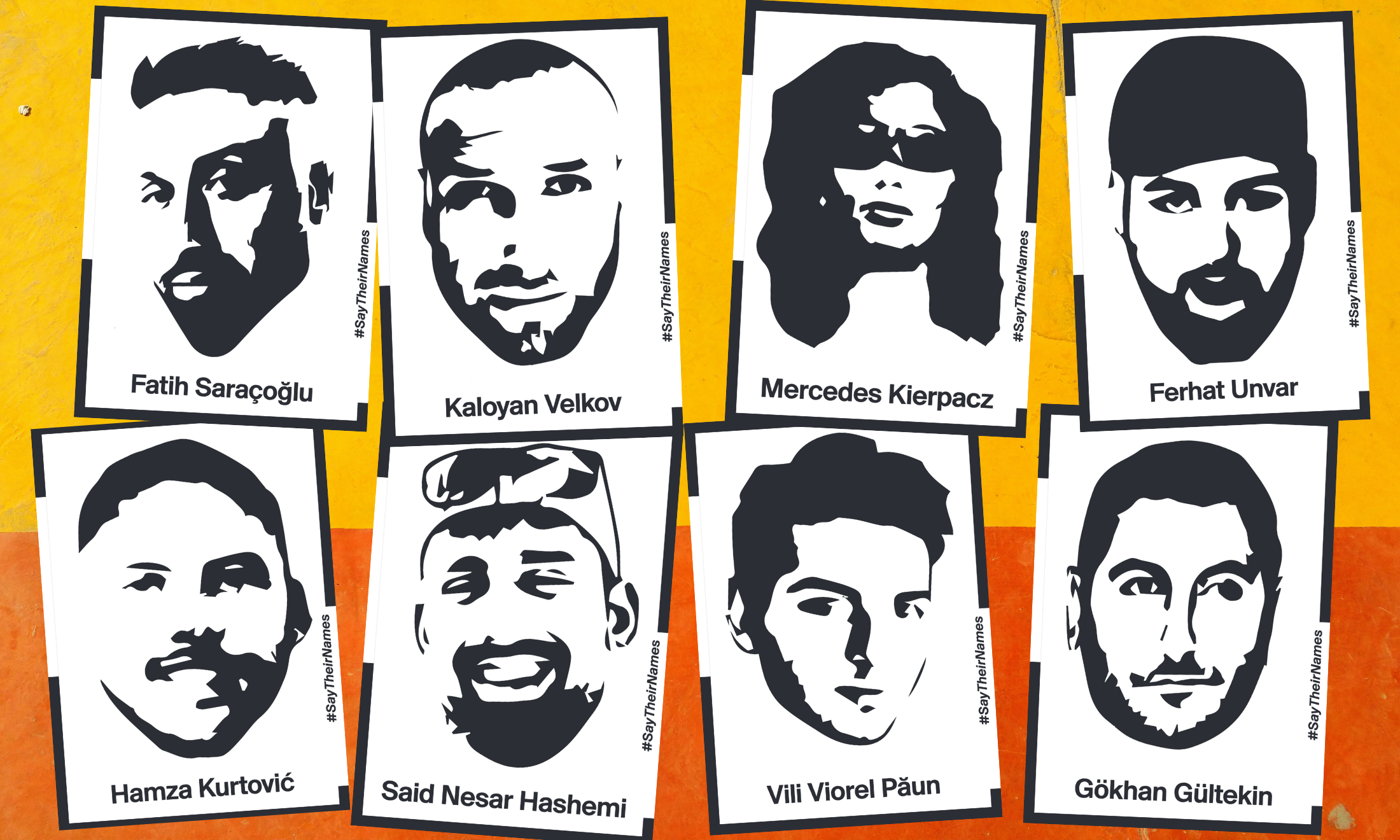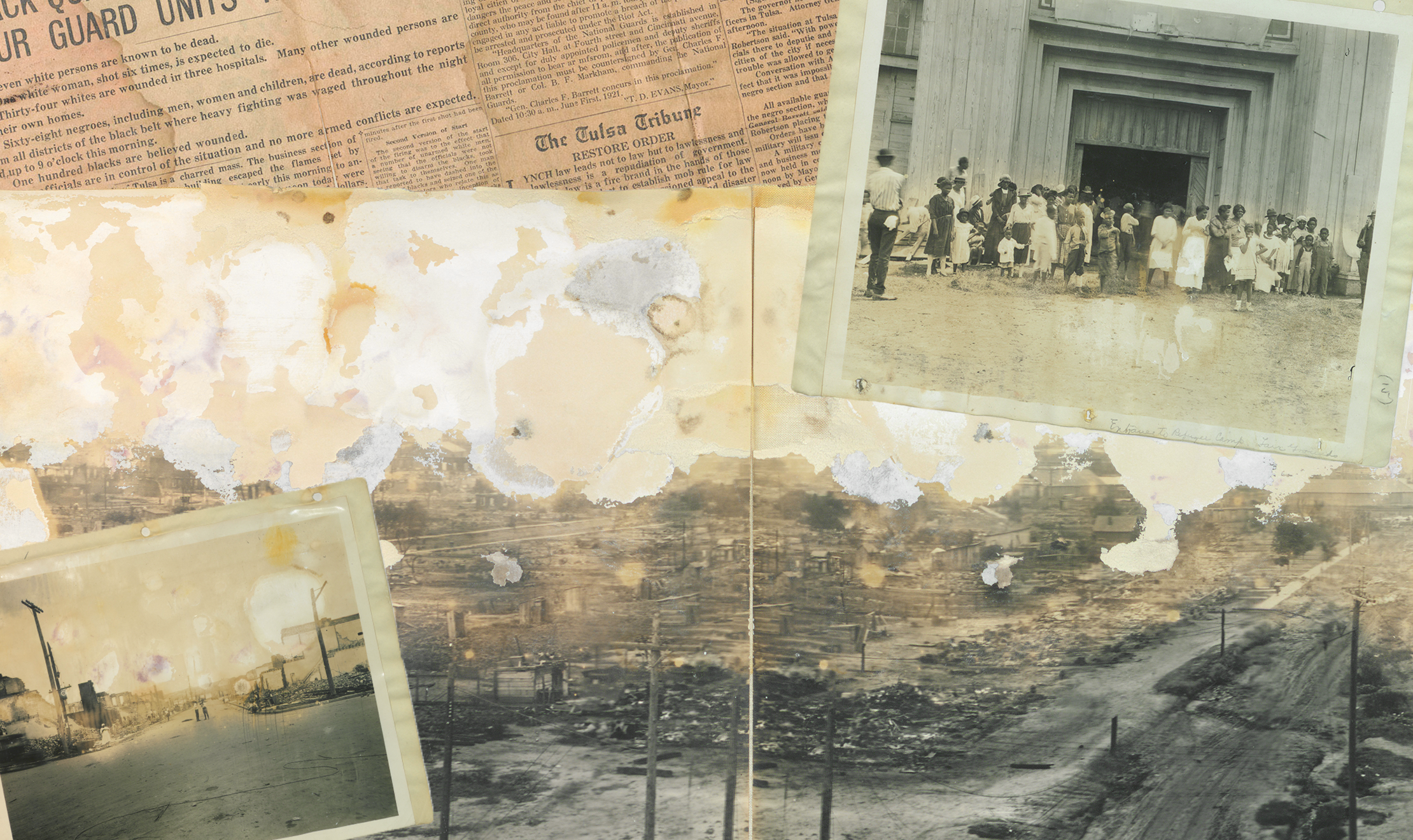
Why did a group of white people hold a slave market in an abandoned chalk mine in Denmark?
Anonymous
28 Jul 2017
The Borderland is a place that promises you whatever you want. More precisely, its website offers “co-creators” a chance to bridge “the distance between dream and reality” over a week of camping, distant from the law and the rest of civilisation. Like its parent festival, Burning Man, The Borderland claims to create a temporary alternative society in a wasteland, in this case a former quarry on the Danish coast. This year they hosted a “slave market”.
If you’re unfamiliar with what a “slave market” held in Denmark, 2017, looks like then a quick glance at the Facebook post in The Borderland Facebook group will bring you up to speed. The organisers of the “slave market” invited the participants to “sell themselves, partners, friends, lovers or enemies” in the market. The buyer was invited to play as they wished with their “merchandise”.
Organisers and defenders of the “slave market” were quick to claim to their critics that the event was about kink culture, not racial dynamics.
Some participants claimed that white people selling white people is a Scandinavian tradition, and entirely disassociated from racism.
The original poster of the digital flyer went so far as to argue that the event was a way to “dive in and explore … race …with empathy and awareness”.
Rather than forming a coherent ideological justification, the arguments defending the event were muddled, suggesting simultaneously that the event isn’t racial, that it is racial but it doesn’t matter and even that the event is aimed at creating racial harmony and understanding. The inconsistency of these comments fails to make a case for the “slave market”, beyond, “we want it, therefore we are entitled to have it”.
At a basic level the “Edgy slave market” (yes, it is really called that) prompts anger because it mimics the power relationships of slavery whilst failing to conceive the horror. The commenters who swiftly pointed out that the game was entirely voluntary and consensual, even humorous, have missed the point.
Slavery has a bloody history of white supremacy and its legacy continues in racial dynamics across the world. By reconstructing these power relations, in a safe, fun, sanitised environment participants are not able to explore, or learn because there is nothing real in their experiences. Their actions can only ever be mockery, a blotchy photocopy of the real and pervasive trauma that is the heritage of those affected by slavery.
“Slavery has a bloody history of white supremacy and its legacy continues in racial dynamics across the world”
In this event the 12 million slaves shipped from African countries over the course of the transatlantic slave trade were literally and metaphorically costumes for a festival game. The violence of their lives from the sickening conditions of slave ships to the routine rape and assault of plantation life is reduced to material for bored white people to play with.
By extension, modern slaves and slave markets are fodder for the players too. One wonders what the point is of attending the festival when for roughly the price of a ticket you could also buy a ticket to Libya and attend an actual slave market. In fact, today it is cheaper than ever before to buy a human being. Forget attending a slave market, for $50 or a $100 dollars, thrill-seekers could really “explore” the power dynamics and use the cost of their tickets to buy an actual human being.
The problem with the “Edgy slave market” goes further than its failure to consider the realities of historic and contemporary slavery. Participants of the event have been horrified by being called out, one commenter referred to critics as “narcissistic …self-pompous [sic] killjoys”. Other white people have decried the attempts to “oppress” and “censor” their freedoms.
“The violence of their lives…is reduced to material for bored white people to play with”
In an overwhelmingly white space their responses are unsurprising. Accusations of cultural appropriation are frequently raised around costume in Burning Man, even when these accusations come from within the community they receive little air time. In a community where cultural artefacts from Native American headdresses to bindis are simply fun accessories to illustrate the cool, alternative leanings of their wearers, the failure to understand why slave markets have a complex, oppressive cultural weight is perhaps to be expected.
Over the crowd’s shouts of “satire” and “black humour”, the board of the festival posted their response. With caveats about “actively working to strike a balance between different voices” and being “committed to fighting racism” ultimately the board threw their hands up, and said that they were not “entitled” to interfere in events. Their inaction is a confirmation of the racism that underpins so many radical, apparently progressive spaces. The message is clear: these games may be insensitive, they may even be racist, but ultimately the right of white participants to “radical self expression” is more important than interrogating these actions and dismantling racism.
This event is a comment on contemporary whiteness. It reminds all people of colour that ultimately many white people believe that they cannot be free without the opportunity to act entirely without question, even if their actions directly reproduce the power structures of racist oppression. It isn’t enough to enjoy better educational opportunities, louder voices, higher wages, and greater safety, than people of colour. To be truly free, many white people believe that they need to be able to produce and reproduce structural oppression at will. They need the freedom to create a slave market, without criticism or consideration of their historic complicity in racism. Ultimately, we must remember that The Borderland is a participatory event, where crucially, you can do whatever you want.














